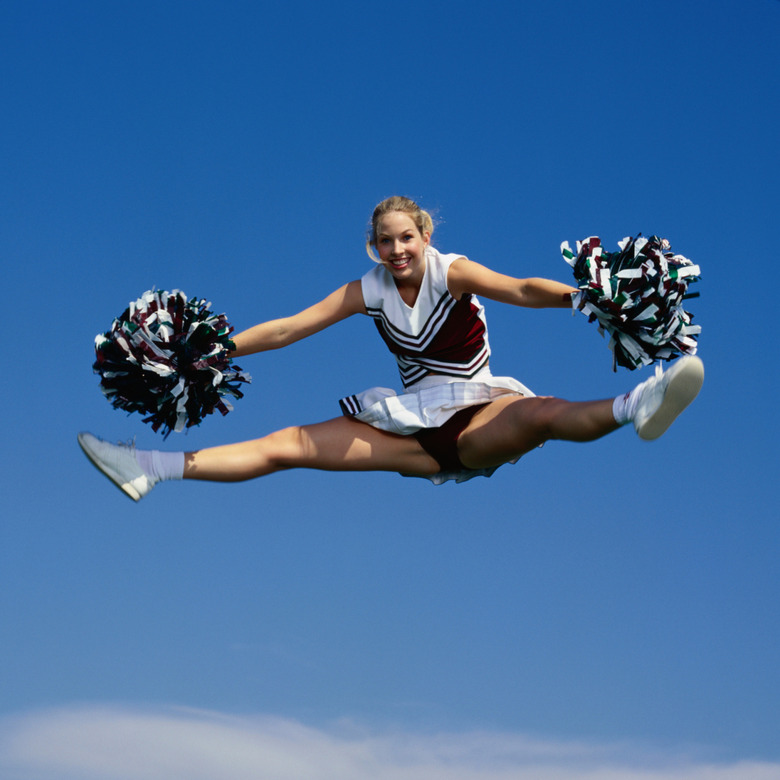Tumbling Or Cheerleading Science Fair Projects
Scientific elements are much easier to understand when related to something outside of numbers, formulas and theories. With all the motions, dances, chanting, stunts, and tumbling, cheerleading is an extremely physical activity. Like many sports, cheerleading is a great example of scientific forces such as momentum, inertia, and gravity. While many studies regarding cheerleading are based off of stereotypes and sociological influences, science fair projects should focus on the math of physical cheer skills and techniques, or on behavioral scientific influence like audience interaction.
Audio/Visual
Audio/Visual
Attend a game where cheerleaders attempt to lead the crowd both auditorily and visually. Suggest a hypothesis that supports the success of audio vs. visual cues, or both. Note whether the chanting or sign waving gets a better crowd reaction and participation. Note the difference when both audio and visual cues are combined to lead the crowd.
Gravity
Gravity
Cheerleaders can be used to show the physics behind Newton's Third Law of Gravity. The science student can assess different types of stunting and tumbling in a cheerleading routine to determine the types of energy and forces necessary to pull off the moves, and analyze how velocity and angular momentum, as in twisting or tucking the body, determine the success of tricks.
Mass and Acceleration
Mass and Acceleration
Force is determined by mass times acceleration, and likewise a cheerleader's size and technique determine the force created to tumble. A science project can trial the cheerleaders in weight and speed, and suggest a hypothesis for which type of cheerleader creates the most force or power through their tumbling. In cheerleading, tumbling strength is often measured by the amount of "rebound" one has after a trick.
Balance
Balance
Test different cheerleaders in different stunting positions to determine which builds balance best as flyers and bases. The science student can hypothesize about which combination of bases, and which flyer and bases combination, will work out best. There must be a balanced combination between bases and the flyer to produce a strong and balanced overall stunt.
Cite This Article
MLA
Carpenter, Melissa. "Tumbling Or Cheerleading Science Fair Projects" sciencing.com, https://www.sciencing.com/tumbling-or-cheerleading-science-fair-projects-12751021/. 17 November 2011.
APA
Carpenter, Melissa. (2011, November 17). Tumbling Or Cheerleading Science Fair Projects. sciencing.com. Retrieved from https://www.sciencing.com/tumbling-or-cheerleading-science-fair-projects-12751021/
Chicago
Carpenter, Melissa. Tumbling Or Cheerleading Science Fair Projects last modified August 30, 2022. https://www.sciencing.com/tumbling-or-cheerleading-science-fair-projects-12751021/
